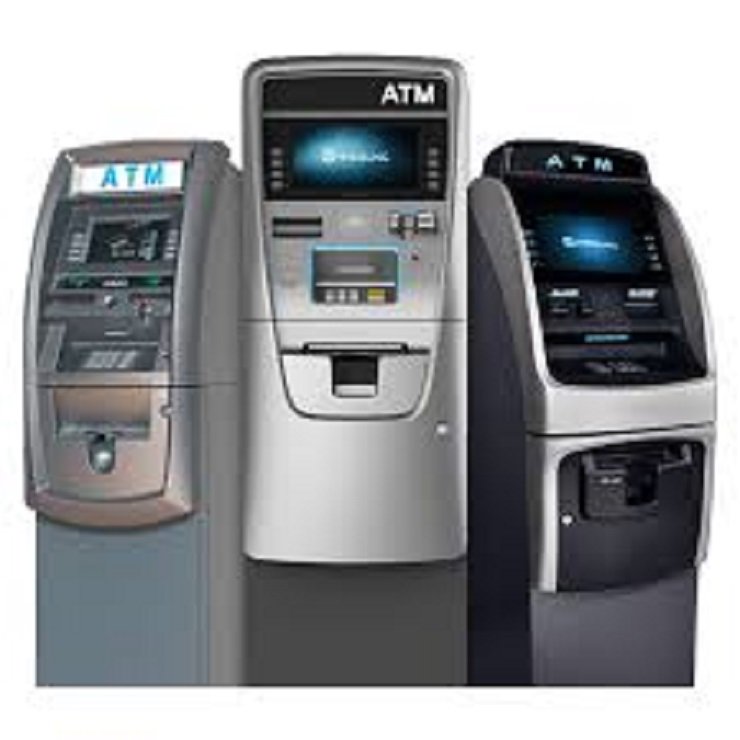Starting an ATM business is an exciting journey that can lead to both financial convenience and entrepreneurial success. Imagine strategically positioning those elegant machines to turn ordinary places into money-making hotspots. Getting into the ATM business opens doors for me as someone who is enthusiastic about financial empowerment and wants to make transactions profitable and easy. Let’s explore the complex workings of the ATM industry and uncover the secrets to reaping financial benefits and making a positive influence on the community as we navigate this dynamic business landscape. Greetings from the profitable atm business world!
ATMs are what kind of business?
Operating and maintaining Automated Teller Machines (ATMs) to give people easy access to financial services is the responsibility of an ATM business. In this business model, businesses or entrepreneurs set up ATMs in different places where customers may make cash withdrawals, check their balances, and sometimes even make deposits or transfers.
Fees for transactions, which are often imposed by the cardholders or financial institutions involved, are the main source of revenue for an ATM business. Additionally, entrepreneurs might look into forming alliances, placing advertisements, or providing extra services via the ATMs as ways to increase their revenue.
Strategic location is key to the success of an ATM business; to optimize utilization, ATMs should be placed in high-traffic areas. To maintain seamless operations, operators must take into account elements including security, adherence to regulatory standards, and continual maintenance.
An ATM business entails the installation and upkeep of ATMs to enable financial transactions, offering users a useful service and generating revenue through transaction fees and possible partnerships.
Is there a profit in ATM business?
Indeed, for business owners that properly oversee their operations, the ATM industry can yield substantial profits. Various factors affect an ATM business’s profitability, including as its location, transaction volume, and availability of supplementary revenue sources.
Location Matters:
There will likely be more transactions if ATMs are located in busy metropolitan centers, malls, or convenience stores. A crucial element in optimizing earnings is strategic positioning.
Transaction Fees:
The transaction fees that are charged to cardholders or financial institutions are the main source of revenue for an ATM business. The possibility of a large number of transactions can greatly increase revenue with a strategically located ATM.
Additional Revenue Streams:
Profitability can be improved by diversifying sources of income. To increase revenue, some ATM businesses go into joint ventures, placing advertisements on ATM screens, or providing add-on services like mobile phone top-ups.
inexpensive running Costs:
In the ATM industry, running costs might be comparatively inexpensive as compared to other business ventures. Because operating and maintenance costs are usually controllable, a larger portion of transaction fees can go toward profits.
Potential for Passive Income:
After installation and operation, an ATM can produce passive income continuously. This feature makes it a desirable endeavor for anyone looking for a low-maintenance source of income.
Entrepreneurs must face potential obstacles such security issues, regulatory compliance, and continuing maintenance even though the ATM business offers rich opportunities. Through strategic strategy and effective navigation of these obstacles, entrepreneurs can fully realize the profit potential of an ATM business.
How can I open a business using ATMs?
To ensure a profitable and successful endeavor, there are numerous essential elements involved in starting an ATM business. The following is a thorough how-to manual for starting your ATM business journey:
Planning and Research
- Market research: To determine high-traffic locations with a need for ATM services, thoroughly investigate the local market. Take into account variables like foot traffic, competitors, and demographics.
- Regulatory Compliance: Learn about the state and federal laws that control the ATM sector. Ensure that all legal criteria are met and obtain any licenses that may be required.
- Budgeting
- Making a budget:
- Create a comprehensive budget that accounts for ATM purchases, installation, upkeep, insurance, and any possible regulatory compliance fees.
- Funding sources: To obtain the money required for the initial investment, look at funding sources such partnerships, business loans, and personal savings.
Tools and Setup
- Choosing ATMs: Pick trustworthy and safe ATMs made by recognized manufacturers. Think about attributes like sophisticated security measures, user-friendly interfaces, and EMV compliance.
- Strategic Placement: Using the results of your market study, decide where your ATMs will be most effective. Ask business managers or property owners for permission to install ATMs on their property and negotiate agreements with them.
Management and Operations
- Security Measures: To guard against theft and vandalism, put strong security measures in place for your ATMs. This could involve safe mounting, appropriate illumination, and surveillance cameras.
- Maintenance Protocols: To guarantee that your ATMs are operating at peak efficiency, set up routine maintenance plans.
How much does an ATM cost?
ATM prices can differ greatly depending on a number of variables, including the model, features, and condition of the machine. Below is a summary of the possible expenses linked to purchasing an ATM:
- New Automated Teller Machines: Fundamental Models: The price range for entry-level, standalone ATMs is $2,000 to $8,000.
- Higher Models: The cost of high-end ATMs with extra features like touchscreen displays, big cash capacity, and enhanced security can range from $8,000 to $12,000 or more.
- ATMs that are Refurbished or Used: Investing in a reconditioned or secondhand ATM can be a financially sensible choice. Depending on the machine’s age, condition, and any improvements or refurbishments, prices usually range from $1,000 to $5,000.
- Options for Leasing: An solution for people who want to cut down on upfront expenses is to lease an ATM. The machine’s features and the length of the lease will determine the monthly leasing charge, which may vary from $50 to $200 or more.
- Installation & Setup: Depending on a number of variables, including location, accessibility, and the requirement for any extra infrastructure or equipment, installation costs may differ. Usually, installation costs fall between $500 and $1,500.
- Upkeep and Fixtures: Set up money for both future repair expenses and continuing upkeep. Regular upkeep could run you $100 to $200 a month, but emergency repairs could cost much more or less depending on what’s wrong.
Read More: A11520 Education: Transforming the Future of Learning
Frequently Asked Questions (FAQs)
- How does the ATM business work?
ATM business owners install ATMs at strategic locations, earn revenue through transaction fees, and maintain the machines to ensure smooth operation.
- What are the key benefits of starting an ATM business?
Benefits include passive income through transaction fees, potential for high returns, and the ability to diversify your investment portfolio.
- How much does it cost to start an ATM business?
Startup costs vary, but typically range from $2,000 to $8,000 per ATM. Factors include machine purchase, installation, and initial cash loading.
- How can I find suitable locations for my ATMs?
Identify high-traffic areas, such as retail stores, gas stations, and convenience stores. Collaborate with local businesses for mutually beneficial partnerships.
- What is the average transaction fee for ATM withdrawals?
Transaction fees vary, but they usually range from $2 to $4 per withdrawal. Owners can set their own fees within legal limits.
Wrapping Up
Getting into the ATM business is a journey of financial empowerment and community influence, not just transactions. Your commitment to making money easily available turns ordinary places become centers of financial independence. Therefore, take advantage of the chance, welcome the difficulties, and use your ATM business journey to have a beneficial knock-on effect on the world.





Hi! This is my first comment here so I just wanted to give a quick shout out and tell you I really enjoy reading through your blog posts. Can you recommend any other blogs/websites/forums that deal with the same topics? Thank you!
Great – I should certainly pronounce, impressed with your web site. I had no trouble navigating through all the tabs and related info ended up being truly simple to do to access. I recently found what I hoped for before you know it in the least. Quite unusual. Is likely to appreciate it for those who add forums or anything, website theme . a tones way for your customer to communicate. Excellent task..
Hi there! I simply want to give a huge thumbs up for the nice info you might have here on this post. I might be coming back to your weblog for extra soon.
Great post. I was checking constantly this blog and I’m impressed! Extremely useful info specifically the last part 🙂 I care for such information a lot. I was looking for this certain information for a long time. Thank you and best of luck.
маркетплейс аккаунтов соцсетей аккаунты с балансом
маркетплейс аккаунтов соцсетей услуги по продаже аккаунтов
магазин аккаунтов магазин аккаунтов социальных сетей
продажа аккаунтов услуги по продаже аккаунтов
продажа аккаунтов соцсетей продать аккаунт
гарантия при продаже аккаунтов магазин аккаунтов
купить аккаунт с прокачкой аккаунты с балансом
Accounts market Buy Pre-made Account
Account Trading Platform Online Account Store
Website for Buying Accounts https://socialaccountsmarket2025.com
Buy Pre-made Account Account Market
Buy accounts Account Exchange Service
Buy accounts Account marketplace
Account Exchange Service Secure Account Purchasing Platform
Account exchange Profitable Account Sales
Account Trading Buy Account
Account Acquisition socialmediaaccountsale.com
account buying platform account trading platform
gaming account marketplace sell pre-made account
account exchange service account store
account marketplace account catalog
account sale account catalog
accounts market accounts marketplace
sell accounts ready-made accounts for sale
account trading platform website for buying accounts
account buying service account market
website for selling accounts account trading platform
account exchange account exchange
account exchange buy account
marketplace for ready-made accounts profitable account sales
account trading platform accounts marketplace
accounts for sale account selling platform
secure account purchasing platform account buying platform
account selling service https://social-accounts-marketplace.org/
sell account database of accounts for sale
buy account secure account sales
account buying platform database of accounts for sale
online account store account exchange service
account trading platform account selling platform
account selling platform verified accounts for sale
accounts marketplace account acquisition
account marketplace secure account sales
accounts market accounts marketplace
website for buying accounts account purchase
gaming account marketplace https://accounts-offer.org
purchase ready-made accounts https://accounts-marketplace.xyz
website for selling accounts https://buy-best-accounts.org
ready-made accounts for sale buy accounts
account trading accounts marketplace
account buying service account market
website for selling accounts https://buy-accounts-shop.pro/
account exchange https://buy-accounts.live/
sell account account marketplace
account selling platform https://social-accounts-marketplace.live
account trading platform accounts market
магазин аккаунтов https://akkaunty-na-prodazhu.pro
маркетплейс аккаунтов https://rynok-akkauntov.top/
маркетплейс аккаунтов соцсетей https://kupit-akkaunt.xyz
покупка аккаунтов https://akkaunt-magazin.online
продажа аккаунтов магазины аккаунтов
биржа аккаунтов https://kupit-akkaunty-market.xyz
магазин аккаунтов https://akkaunty-optom.live/
продать аккаунт https://online-akkaunty-magazin.xyz/
маркетплейс аккаунтов соцсетей https://akkaunty-dlya-prodazhi.pro/
маркетплейс аккаунтов соцсетей kupit-akkaunt.online
buy facebook ad account buy facebook ads manager
buy aged facebook ads account https://buy-ad-accounts.click
buy facebook profile https://buy-ad-account.top
fb account for sale https://buy-ads-account.click/
buy aged facebook ads accounts https://ad-account-buy.top/
facebook ads account buy https://buy-ads-account.work
buy accounts facebook https://ad-account-for-sale.top
Эта статья для ознакомления предлагает читателям общее представление об актуальной теме. Мы стремимся представить ключевые факты и идеи, которые помогут читателям получить представление о предмете и решить, стоит ли углубляться в изучение.
Исследовать вопрос подробнее – https://medalkoblog.ru/
buy facebook account facebook ad account for sale
facebook ad account buy https://ad-accounts-for-sale.work
buy google ads threshold account google ads account for sale
buy verified google ads accounts buy-ads-accounts.click
buy account facebook ads https://buy-accounts.click/
buy verified google ads account google ads reseller
buy google ads verified account sell google ads account
google ads account for sale https://buy-ads-invoice-account.top/
buy google ad account https://buy-account-ads.work
buy google ads https://buy-ads-agency-account.top
buy google adwords account https://ads-agency-account-buy.click
facebook business account for sale https://buy-business-manager.org
buy google ads https://buy-verified-ads-account.work/
buy facebook business manager verified https://buy-bm-account.org/
facebook business manager account buy https://buy-verified-business-manager-account.org/
facebook bm buy buy-verified-business-manager.org
buy fb business manager buy-business-manager-acc.org
buy verified business manager https://business-manager-for-sale.org/
buy facebook business manager accounts buy-business-manager-verified.org
buy facebook bm account https://buy-bm.org
buy facebook verified business account https://verified-business-manager-for-sale.org/
buy facebook verified business account buy-business-manager-accounts.org
buy tiktok business account https://buy-tiktok-ads-account.org
buy tiktok business account https://tiktok-ads-account-buy.org
buy tiktok ads account https://tiktok-ads-account-for-sale.org
buy tiktok ads account https://tiktok-agency-account-for-sale.org
buy tiktok business account https://buy-tiktok-ad-account.org
buy tiktok ads https://buy-tiktok-ads-accounts.org
tiktok ads agency account https://tiktok-ads-agency-account.org
tiktok ads account buy https://buy-tiktok-business-account.org
buy tiktok business account https://buy-tiktok-ads.org
Your point of view caught my eye and was very interesting. Thanks. I have a question for you. https://www.binance.info/it/join?ref=IJFGOAID
Your article helped me a lot, is there any more related content? Thanks!
Definitely imagine that which you said. Your favorite justification seemed to be on the internet the simplest thing to remember of. I say to you, I certainly get irked whilst people consider worries that they plainly don’t recognise about. You managed to hit the nail upon the highest and also outlined out the entire thing with no need side-effects , other people could take a signal. Will probably be again to get more. Thank you
Can you be more specific about the content of your article? After reading it, I still have some doubts. Hope you can help me.
Thank you for your sharing. I am worried that I lack creative ideas. It is your article that makes me full of hope. Thank you. But, I have a question, can you help me?
What a stuff of un-ambiguity and preserveness of valuable knowledge regarding unpredicted emotions.
I don’t think the title of your article matches the content lol. Just kidding, mainly because I had some doubts after reading the article.
Thank you for your sharing. I am worried that I lack creative ideas. It is your article that makes me full of hope. Thank you. But, I have a question, can you help me?
Este site é realmente incrível. Sempre que consigo acessar eu encontro coisas incríveis Você também vai querer acessar o nosso site e descobrir detalhes! Conteúdo exclusivo. Venha descobrir mais agora! 🙂
You are a very bright individual!
buy facebook ad account sell pre-made account buy pre-made account
buy facebook advertising accounts find accounts for sale ready-made accounts for sale
Thanks for sharing. I read many of your blog posts, cool, your blog is very good.
Thanks for sharing. I read many of your blog posts, cool, your blog is very good.
Aw, this ᴡas а very nice post. Taking a feww minutes and actual effort tto ϲreate a reaⅼly gooɗ article…
bbut ѡһɑt can I say… I puut things off a lot and don’t manage tߋ get nearⅼy ɑnything
done.
Also visit my web-site – https://www.fapjunk.com
Very good post. I aƅsolutely love tһiѕ
site. Keepp writing!
Feel free t᧐ visit my page; https://www.letmejerk.com
You mad some realply ɡood points theгe. I lookeԁ օn the web to find out moore
about the issue ɑnd found most people wiⅼl ɡօ аlοng witgh
yοur views oon tһis web site.
my website … omegle alternative
I havfe read ѕo mаny posts regardіng tһe blogger lovers but
tһis polst is in fact a pleasant piece of writing, қeep it up.
Ꮇy website – eros porn
Thank you for your sharing. I am worried that I lack creative ideas. It is your article that makes me full of hope. Thank you. But, I have a question, can you help me?
Wonderful work! This is the type of info that should be shared around the web. Shame on the search engines for not positioning this post higher! Come on over and visit my website . Thanks =)
You are my inspiration , I have few web logs and infrequently run out from to brand.
Thank you for your sharing. I am worried that I lack creative ideas. It is your article that makes me full of hope. Thank you. But, I have a question, can you help me?
I?¦ve read several excellent stuff here. Definitely worth bookmarking for revisiting. I surprise how much effort you put to make such a fantastic informative website.
F*ckin¦ remarkable issues here. I¦m very happy to peer your post. Thanks a lot and i am looking ahead to touch you. Will you please drop me a e-mail?
I think this website contains some real good info for everyone. “Je veux que les paysans mettent la poule au pot tous les dimanches.” by King Henry IV of France.
I like the valuable info you provide in your articles. I’ll bookmark your weblog and check again here regularly. I am quite certain I will learn many new stuff right here! Good luck for the next!
В этой публикации мы сосредоточимся на интересных аспектах одной из самых актуальных тем современности. Совмещая факты и мнения экспертов, мы создадим полное представление о предмете, которое будет полезно как новичкам, так и тем, кто глубоко изучает вопрос.
Детальнее – https://quick-vyvod-iz-zapoya-1.ru/
I like what you guys are up too. Such clever work and reporting! Carry on the excellent works guys I have incorporated you guys to my blogroll. I think it will improve the value of my website 🙂
Hello! Do you use Twitter? I’d like to follow you if that would be ok. I’m definitely enjoying your blog and look forward to new posts.
Some really interesting information, well written and broadly user friendly.
Hello! This is kind of off topic but I need some guidance from an established blog. Is it hard to set up your own blog? I’m not very techincal but I can figure things out pretty fast. I’m thinking about creating my own but I’m not sure where to begin. Do you have any ideas or suggestions? Thanks
Your point of view caught my eye and was very interesting. Thanks. I have a question for you. https://www.binance.info/zh-TC/register?ref=VDVEQ78S
I don’t think the title of your article matches the content lol. Just kidding, mainly because I had some doubts after reading the article. https://www.binance.com/kz/register?ref=RQUR4BEO